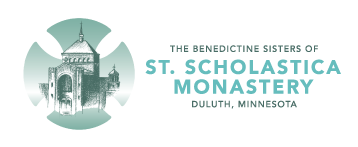January
For the month of January, the calendar shows a photo of two founding members of St. Scholastica Monastery: Mother Scholastica Kerst (carrying an umbrella) and Sister Pauline Dunphy, photographed in 1900 as they look over their newly purchased land, the “daisy farm.”
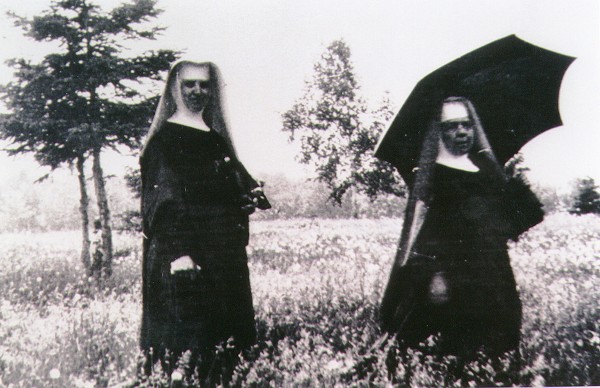
When the Sisters arrived in 1892, one of their first actions was to establish a Catholic grade school for girls, called the Sacred Heart Academy. Initially, this operated in rented rooms in the newly built Munger Terrace, but by 1894 they had constructed their first permanent home in Duluth: Sacred Heart Institute on 3rd Avenue East and Third Street. The school and Community quickly outgrew this space, and so they began looking for property to build a motherhouse and academy.
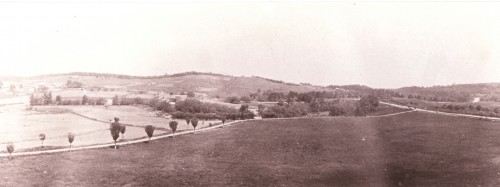
In 1900, the Sisters selected a permanent site for their academy, later to become a college, on the uplands above the city of Duluth, pictured above. Between 1900 and 1908 they purchased 160 acres of farmland that was quickly nicknamed the Daisy Farm, after the oxeye daisies that grew profusely in the fields — and still do.
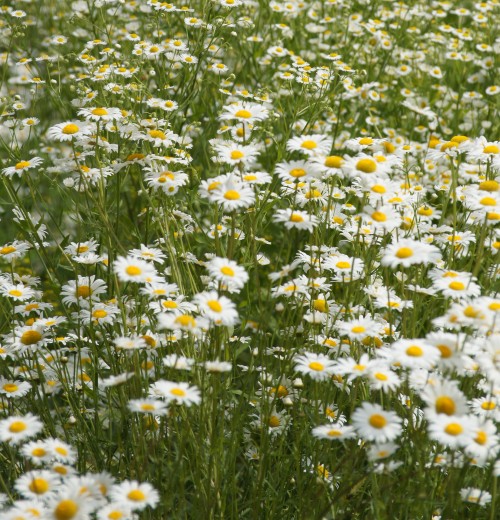
They began building the academy, renamed Villa Scholastica, in 1907, in the center of the tract at an elevation of 680 feet above Lake Superior and 1280 feet above sea level. The site offered fine views across the valley to Fairview Heights towards the northeast, and to Lake Superior and Wisconsin’s Bayfield Peninsula towwards the southeast.
The old farm included a house, barn, and outbuildings in good condition, and had a reliable water supply in Chester Creek, which ran through the property and which they dammed to create a pond. The Sisters hired men to run the farm to provide food for the Academy.
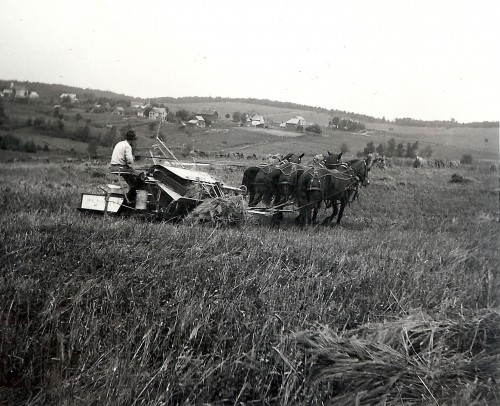
Here is a photo of the dam and pond. On the hillside in the background is Tower Hall of Villa Scholastica, the first phase of contruction of what would become The College of St. Scholastica.
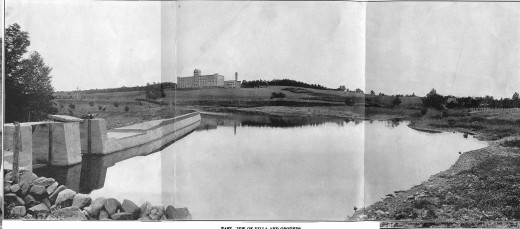
The pond also made a nice skating rink in the winter. The farmhouse, barn, and other outbuilding are in the background. One question: where is the snow?
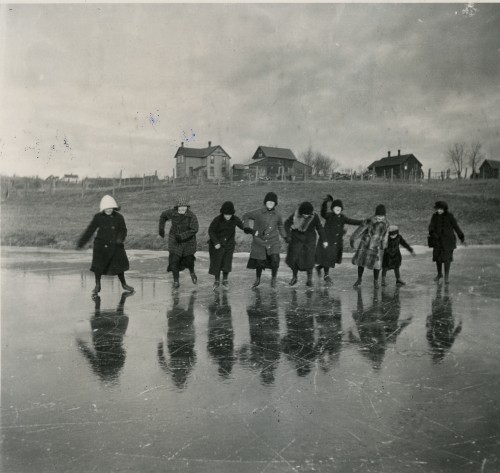
Eventually more land was needed for the expansion of Tower Hall and for parking, and so the dam’s sluice gates were opened and the pond was drained. Little remains of the farm, but the concrete sluiceways still stand, hidden deep in the woods that grew up along the creek. It is easiest to find them in early spring before the ruins disappear behind a screen of foliage.
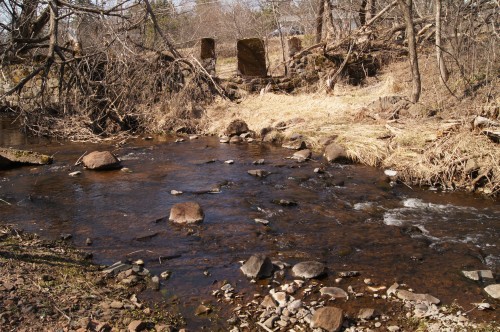
Upstream, the old pond is now a thriving wetland with the creek running sluggishly through it.
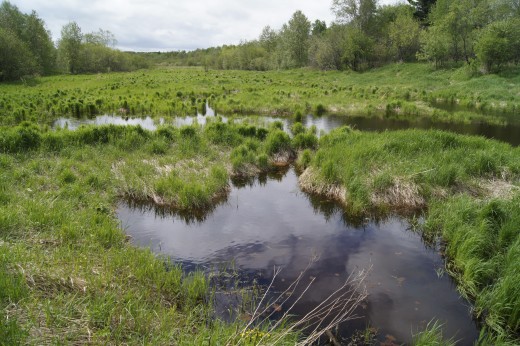
So that is how we came to have a beautiful wetland bordering our property on the north. In spring it is full of water, and ducks and Canada geese stop to rest and feed on their migration north. By summer the waters have drained, and the creek meanders unseen through tall grasses. All one can hear is the wind in the grasses and sometimes the soft murmur of water running down to Lake Superior.
For more information, read +Sister Margaret Clarke’s article Buying the Field, found here.
Sister Therese Marie Carson
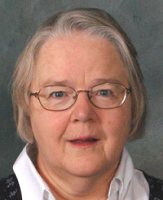
Therese Marie was born in Detroit, Michigan and spent many years as a microbiologist in Harbor Springs, Michigan before coming to Duluth. She had heard a call to vocation since she was young, and found the courage to surrender to it when her faith in God caught fire and became deep love. She made her First Profession on August 31, 2014, at St. Scholastica Monastery in Duluth, Minnesota, and looks forward with joy to becoming a perpetually professed Benedictine. She believes with Albert Einstein that, “There are only two ways to live your life. One is as though nothing is a miracle. The other is as though everything is.”
